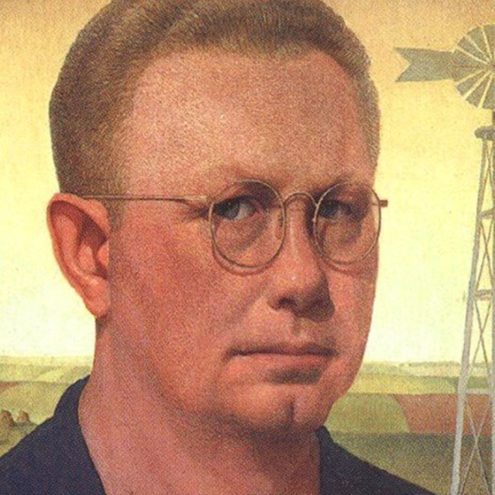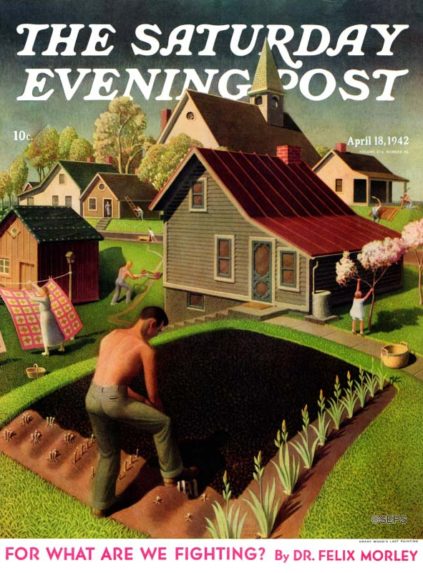Grant Wood (1891-1942) was born in rural Iowa, but his family moved to Cedar Rapids after his father died in 1901. After graduating high school, he enrolled at The Handicraft Guild, an art school in Minneapolis run entirely by women. It is said that Wood returned to the Guild to create his most famous painting,
American Gothic. He enrolled at the School of the Art Institute of Chicago where he worked as a silversmith in 1913.
From 1922 to 1928 Woods made multiple trips to Europe to study different forms of painting. In 1932 he helped found the Stone City Art Colony to help artists get through the Great Depression. He taught painting at the University of Iowa’s School of Art from 1934 to 1941, where he supervised mural painting projects, mentored students, and produced a variety of his own works. He died the day before his 51st birthday at the university hospital.
Wood is closely associated with the American Regionalism style of painting, which including realistic portrayals of Midwestern, small-town America. This style is evident in his painting that appeared on the April 18, 1942, issue of the Post, twelve years after he painted American Gothic.
Author image: self-portrait.

